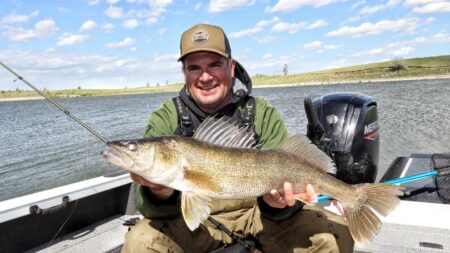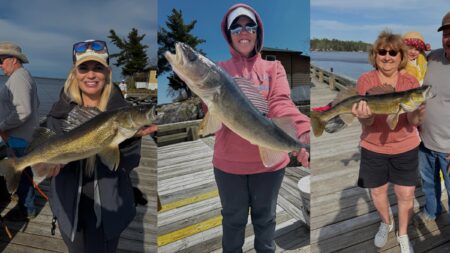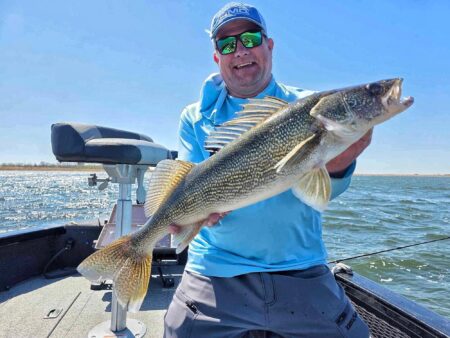We answer the question, “What do walleyes do right after the spawn?” and cover how and where to target post spawn walleye.
When we get a cold, wet, windy spring, the walleye spawn will often spread out over several weeks. They won’t all spawn at the same time and some fish will spawn several weeks before the latter fish. This is especially true on larger systems where you have different water temps and different bays warming up at different times.
The biggest thing about finding fish right after the spawn is that you have to identify where they spawn. It might be an incoming tributary or a creek that’s dumping warmer water in and there’s some gravel along the shorelines. Or rip rap along an embankment like a causeway where there’s a bridge with some rock at the shoreline. Might also be just a windswept shoreline where there’s a bunch of pea rock – those hard bottom areas. Typically, if you have good water circulation and a hard bottom, that’s where these fish are going to spawn.
Right after the spawn, walleye don’t necessarily go very far. Usually within about 400 yards of where these fish spawn is where you can count on finding these fish at least for the first couple weeks after the spawn. My favorite locations to look for are large flats adjacent to spawning locations that are less than 12-13 feet of water. Less than 10 feet of water is even better because these spots are going to warm up quickly. The bottom might be flat, scattered rock, might have some emerging vegetation. A lot of times, the bigger the spot, the more fish it can hold. This is not to say that smaller spots aren’t good, because they can be especially great if they’re overlooked by other anglers. With the large flats, you also want to consider the classic access to deep water, but not always. A lot of times, finding the best location for post spawn walleye is more about water temperature.
There’s a lot of different patterns that can emerge, and every lake will have its own personality, but on the vast majority of the lakes we fish, if you can find flats near spawning areas, that’s where it’s at. That flat might be a shallow bay with a tributary or creek coming into the back end of it. Maybe the fish push up into the mouth of that creek to spawn and they just hang out in that bay with the warmer water.
Water temperature is a big deal before the spawn, but it’s also a big deal after the spawn. When you’re looking for these shallow flats, keep an eye on that temperature gauge. A lot of times, if you can find the pockets of warmer water on the flat, you’ll find the fish. Another thing to look for is water color. A lot of times, if the water is cold is going to be clearer. So if you come out on these flats and can see the bottom in 10-12 feet of water, you’re probably going to struggle to catch fish. What you’re looking for is that stained tea color which also indicates that the water has warmed up. When you look down into the water, I like to fish double the depth that I can see. So, if I can see down 3-4 feet, 8 feet is a good spot to start.
Look for that warmer, stained water and find the large flats near spawning locations and that’s a great way to find walleye early in the year right after the spawn.




